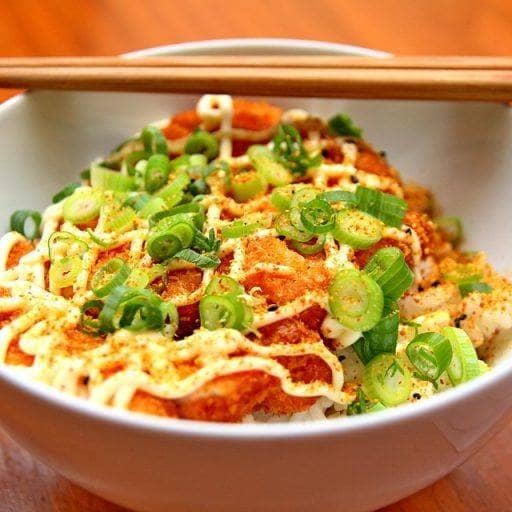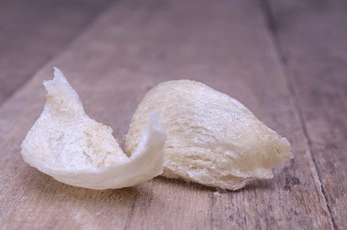Ad Blocker Detected
Our website is made possible by displaying online advertisements to our visitors. Please consider supporting us by disabling your ad blocker.
❤ Almond chicken Gai Ding
Almond chicken Gai Ding ❤ is one of our chicken recipes and also asian food.
Chinese food recipes.
It is hearty dinner ready in less than 30 minutes! Enjoy this filling recipe featuring chicken, fish, veggies and almonds .
Chicken recipes.
This Gai Ding dish is mixed vegetables with chicken and almonds. Almond Soo Gai is breaded chicken with gravy on the side.
A delicious chicken recipe.
Ingredients:
- 1/4 cup almonds
- Oil for deep-frying
- 1/2 pound boned chicken
- 1/2 cup button mushrooms
- 1/2 pound Chinese cabbage (bok choy)
- 4 water chestnuts
- 1 dozen snowpeas
- 1/2 teaspoon salt or to taste
- 1/2 cup diced bamboo shoots
- 1/2 cup diced celery
- 1/4 cup water
- 1/2 teaspoon light soy sauce
- 1 teaspoon cornstarch mixed with 3 tablespoons water
- Dash of pepper
- 1/4 teaspoon sugar
Preparation:
Deep-fry the almonds in oil heated to 375 degrees for 3 minutes. Allow to cool. Dice the chicken , mushrooms, cabbage, and water chestnuts into 1/4-inch cubes. String the snow peas.
Heat a wok or a skillet over high heat until a drop of water inmidiately sizzles into a steam. Add 2 tablespoons of the oil and salt. Add the chicken and stir-fry for 2 minutes.
Add the mushrooms, cabagge, water chestnuts, bamboo shoots, snow peas, and celery. Stir-fry for 1/2 minute to coat with oil. Add the water and soy sauce. Cover and cook for 2 minutes. Add the cornstarch mixture, pepper and sugar. Stir for 1/2 minute or until the sauce has thickened. Top with the almonds before serving.
What does Ding mean in Chinese food?
[otw_is sidebar=otw-sidebar-1]
Asian food
The following is a description of the traditional Asian diet as believed to be related to disease prevention and increased longevity. The dietary principles described here are based on the historical diets of rural Japan, China, and other Asian nations. Today, many fast-food restaurants and western-style eating patterns have become more common in Asia. With these recent dietary changes, heart disease, obesity, and cancer rates have also been on the rise.
Purpose
A well balanced diet is an important part of a healthy lifestyle. Throughout the world agriculture, climate, availability of certain foods, and cultural differences influence what people eat. The United States has developed the Food Guide Pyramid to show healthy eating patterns for people over two years of age. Other parts of the world may have different ways of eating, but they may be just as healthy.
The traditional Asian diet receives a lot of attention because many of the chronic diseases, such as heart disease, diabetes, and certain cancers, are not as common in Asia as in the United States and other western nations. Researchers believe that the Asian plant-based diet provides protection against many chronic diseases. The diet is also believed to contribute to the long life spans commonly seen in Asia.
Nutrition Facts
If consumed in adequate amounts, the traditional Asian diet contains all of the essential nutrients needed by most adults. High in fiber, vitamins, minerals, and antioxidants, the Asian diet is also low in saturated and total fat. It is this combination that many health professionals believe protects against many chronic diseases, such as heart disease and cancer.
The Asian diet is relatively low in meat and dairy foods. Protein and iron are obtained from nuts, seeds, and legumes. Iron is also provided through certain vegetables, such as dark leafy greens. Calcium is obtained from soy products, nuts, seeds, and green leafy vegetables.
The dietary principles of the Asian diet are meant to be for the average healthy adult. Individuals with special nutritional needs, such as children, pregnant women, or those with certain medical conditions, should consult a physician or registered dietitian to determine their appropriate dietary requirements.
Foods Eaten Daily
The following is a general description of how foods are proportionately consumed in the traditional Asian diet. Foods are divided into categories based on whether they are to be consumed daily, weekly, or monthly. The Asian diet does not recommend serving sizes or number of servings per day. Rather the emphasis is on a proper balance of healthy foods.
- Grains and Breads: Of the foods consumed on a daily basis, rice, rice products, noodles, breads, millet, corn, and other grains are consumed in the greatest amount. Potatoes and cereals are included in this food group.
- Vegetables: Fresh vegetables are also consumed in large quantities in the traditional Asian diet. Cabbage, bok choy, scallions, dark leafy vegetables, and bean sprouts are just a few of the many different kinds of vegetables used.
- Fruit: Fruit is another food that is enjoyed on a daily basis, with as much variety as possible. Bananas, mangoes, tangerines, watermelon, grapes, and pineapple are examples of the many fruits used for desserts as well as in main courses.
- Nuts and Legumes: Nuts and legumes are the main sources of protein in the traditional Asian diet. They are also good sources of fiber, vitamins, and minerals. Soybean is a commonly used legume in the Asian diet. It can be found in many different forms, such as tofu and soy milk. Nuts, seeds, and tofu are often used in soups, salads, noodle dishes, and main courses.
- Vegetable Oils: Vegetable oils, which are high in unsaturated fats, are used mainly in cooking. This is one of the main differences between the historical Western style diet which uses butter, margarine and other saturated fats in cooking. Medical studies have indicated that a diet high in saturated fats may play a role in some chronic disorders, such as heart disease. Replacing saturated with unsaturated fats, particularly monounsaturated fats which are found in canola and olive oil, has been shown to decrease the risk of heart disease.
- For the average healthy adult.
- Not for children, pregnant women, or those with special nutritional needs.
- Please consult a registered dietitian or physician for further guidelines.
Optional Daily Foods
- Dairy products: Dairy foods, such as milk and cheese, are not commonly consumed in most traditional Asian diets. If used on a daily basis, choose low or nonfat products in moderate amounts.
- Fish and Shellfish: Fish and shellfish are also considered to be an optional daily food. This is because many Asian people, such as those living in the interior regions of China, did not have access to large amounts of fish. Medical studies have found a relationship between eating fish and prevention of chronic diseases such as heart disease.
Foods Eaten a Few Times a Week
- Sweets: Sweet desserts, that are high in fat and sugar, are consumed in moderation and on a weekly basis only. Try fresh fruit as a healthy and delicious dessert.
- Eggs and Poultry: Eggs, chicken, or turkey are also consumed only a few times a week.
Foods Eaten a Few Times a Month
- Red Meat: Meat is eaten monthly, or more frequently if consumed in smaller servings.
Calcium and Osteoporosis
The lack of dairy foods raises concern about calcium intake and osteoporosis. Even though Asians historically have had low rates of osteoporosis, there may be other factors involved. For example, many rural Asians traditionally spend much of their day performing vigorous activity. Regular exercise, especially weight bearing exercises, may reduce the risk of bone loss. Therefore, a diet with sufficient calcium, along with regular exercise, is suggested for decreasing the risk of osteoporosis.
Although calcium can be obtained from plant foods, it is most readily available from dairy products. As a result, low-fat or nonfat milk or milk products are recommended as important sources of calcium in the American or Western diet. Please consult a registered dietitian for further guidelines.
Special Consideration
- Physical Activity — Many Asians bike or walk for transportation. It is recommended that some form of regular exercise be adopted for health. Regular physical activity has been shown to help control weight, reduce stress, and prevent many chronic diseases.
- Tea — Green and black tea is consumed widely in Asia. Some medical research suggests that the various beneficial antioxidants found in these teas may provide a protective effect against some chronic diseases, such as throat, stomach, lung, and breast cancer.
- Sodium — Historically, Asian diets have been high in sodium, partly due to the use of soy sauce. Today, many Asians are lowering their salt consumption by switching to reduced-sodium soy sauces. They are also increasing their use of many herbs and spices for seasonings. For example, ginger, basil, lemon grass, garlic, fennel, clove, cinnamon, and fresh and dried chiles are just a few of the herbs and spices being utilized as flavor enhancers.
- Wine, Beer, and other Alcoholic Beverages — Alcoholic beverages are considered optional in Asian-style diets. They should be consumed only in moderation. Many health and social factors should also be taken into consideration before determining whether alcohol should be used. For example, alcoholic beverages should be avoided during pregnancy or before operating a motor vehicle.
| Sample Menu | ||
|---|---|---|
| Breakfast | Lunch | Dinner |
|
|
|
|
||
| This Sample Diet Provides the Following | |||
|---|---|---|---|
| Calories | 1,796 | Fat | 50 gm |
| Protein | 120 gm | Sodium | 3,772 mg |
| Carbohydrates | 214 gm | Calcium | 657 mg |
Autor: www.gicare.com











